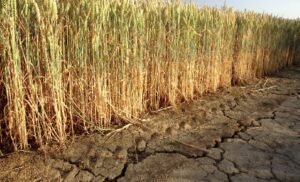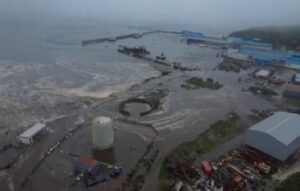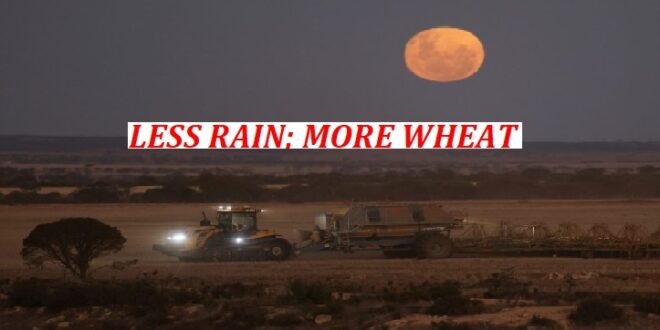31-07-2025
MERREDIN: In a newly sown wheat field, Curtis Liebeck scoops up a fistful of sandy soil and lets it pour through his fingers. The light-brown dirt bears little resemblance to the dark, clumpy earth of rainier nations.
 The Liebeck farm, 300 kilometers (186 miles) from Perth in Western Australia, gets half the rain of the wheat-belts of central Kansas or northern France. Growing-season rainfall across the state’s crop lands has declined by about one-fifth over three decades.
The Liebeck farm, 300 kilometers (186 miles) from Perth in Western Australia, gets half the rain of the wheat-belts of central Kansas or northern France. Growing-season rainfall across the state’s crop lands has declined by about one-fifth over three decades.
That should make farming harder but Liebeck’s wheat yield has doubled since 2015.
Liebeck, 32, is part of a revolution in farm management that has enabled Australia to produce around 15 million metric tons more wheat annually than in the 1980s, despite hotter, drier conditions. The increase is equivalent to around 7% of all wheat shipped around the planet each year and more than the annual harvest of Britain.
Australia’s gains in wheat-farm productivity have exceeded those in the United States, Canada and Europe, according to US Department of Agriculture data, and continue to rise while those of other developed markets slowly or reverse.
The ability of Australia’s farmers to produce more wheat for a growing global population owes largely to a cluster of innovations since the 1980s that changed the seeds farmers plant, how they plant them, and how they cultivate the soil, many growers and researchers say. These advances have been turbocharged by Australia’s system of applied research, and by a relentless quest for efficiency among farmers who receive minimal subsidies.
This account of how Australia’s wheat growers defied the climate odds is based on interviews with more than 20 farmers and researchers, a review of more than a dozen academic papers and an examination of decades of farm and weather data. Reuters visited four farms, a seed-breeding company and two government research facilities.
 Australia isn’t the biggest wheat producer, and its fields aren’t the most fruitful but it is important for two reasons. Its modest population means its additional production feeds other countries and it is the driest inhabited continent, where increasing climate volatility might have rendered some agriculture unviable. Yet it is among the world’s top wheat exporters.
Australia isn’t the biggest wheat producer, and its fields aren’t the most fruitful but it is important for two reasons. Its modest population means its additional production feeds other countries and it is the driest inhabited continent, where increasing climate volatility might have rendered some agriculture unviable. Yet it is among the world’s top wheat exporters.
Australia’s success has influenced research in other nations that have dry crop lands, including the US and Canada, five scientists told media. Some Australian practices, to be sure, such as soil re-engineering, haven’t been replicated as widely, sometimes because ground conditions are less suitable but the country’s focus on closing the gap between theoretical maximum crop yields and real-world outcomes has spurred global efforts to improve productivity over the past 15 years, coinciding with intensifying climate change.
Liebeck’s farm in 2023 received its lowest rainfall in half a century, yet it produced 1 ton of wheat per hectare, to the amazement of his 66-year-old father, Ken.
“I asked dad what it would have been like in his day and he said, ‘Absolute disaster,’” Liebeck said.
The elder Liebeck told media he would have produced just 400 kg a hectare in such conditions around the turn of the millennium.
Farming in Australia has always been precarious. The weather swings between drought, heat, fire and flood. The soil is short of nutrients.
Western Australia, the top wheat-exporting region, has seen the biggest decline in average rainfall of Australia’s cropping areas over the past three decades, official weather data show. Rainfall patterns have shifted, with more falling in summer, when fields are fallow, and less in winter, when crops are growing. (Int’l Monitoring Desk)
 Pressmediaofindia
Pressmediaofindia




